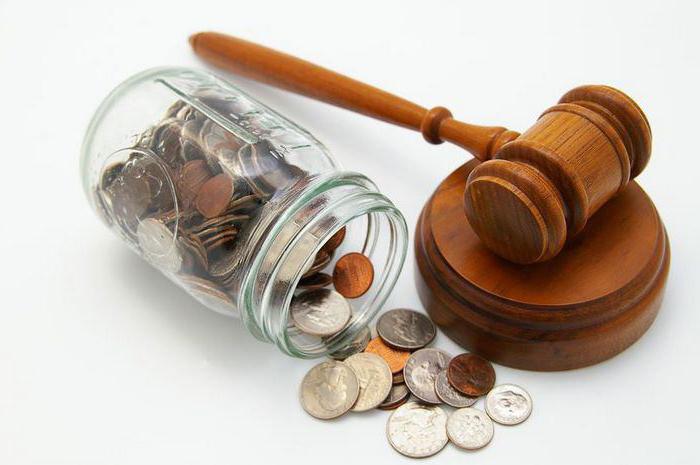During the voluntary liquidation of an enterprise, it often turns out that it does not have a residual amount of funds to pay off all obligations to creditors. In such cases, initiated simplified bankruptcy proceedings of a liquidated debtor. It involves a quick trial. Consider further features of bankruptcy of a liquidated debtor. 
General information
The procedure for recognizing bankruptcy of a liquidated company is regulated Art. 224 Federal Law "On Insolvency (Bankruptcy)".
The reason for initiating the process is the fact that there are not enough funds to pay off the debt. Moreover, the reasons for the liquidation of the company do not matter. According to the provisions of Article 224 127-FZ, one procedure applies to such a debtor - bankruptcy proceedings.
If the company's property is sufficient to pay off obligations, bankruptcy is carried out according to general rules.
Debt Payment Procedure
At bankruptcy of a liquidated debtor obligations are repaid in the following sequence:
- Payments to persons to whom the company has arrears in compensation for property or moral damage.
- Repayment of salary debts to employees.
- Settlements with other creditors.
If the company provided loans secured by material assets, they are repaid at the expense of the value of the property sold.
Last of all, tax arrears are paid. If during bankruptcy of a liquidated debtor there will be no property and money, liabilities to creditors will be recognized as canceled.
Commission formation
If the company being liquidated does not have funds for settlements with creditors, legal proceedings are opened. Before this, when making a decision on termination of activity, a commission is created. Its functions include analyzing the situation and identifying signs of insolvency. 
If a debt to creditors is discovered, the commission draws up a statement of the beginning bankruptcy of a liquidated person and directs him to arbitration. This must be done within 10 days.
Essence of the process
After considering the application and other documents attached to it, the court makes a decision to declare the company insolvent. From this moment, bankruptcy proceedings begin.
Approval of a bankruptcy trustee in liquidation of a debtor assigned to the arbitral tribunal.
Lenders are given 30 days to submit claims. If the enterprise has property, its assessment is carried out. The process manager controls this process.
A month later, tenders are organized. They sell the property of the enterprise. The proceeds are used to repay liabilities to creditors.
Financing
In practice, the question often arises: who pays the bankruptcy trustee in bankruptcy? All costs associated with production are borne by the company, which is recognized insolvent.
According to the provisions 127-FZ, remuneration is paid from the funds received from the sale of property. If it is absent, the costs are distributed among the founders.
Bankruptcy of a liquidated debtor: step-by-step instruction
Summarize the information above. So, bankruptcy of a liquidated debtor carried out in two stages:
- Start insolvency proceedings.
- Bankruptcy proceedings.

At the first stage, the following operations are performed:
- A commission is being formed. Its composition is formed by the founders (participants) of the company. The Commission shall notify the Federal Tax Service Inspectorate of the planned procedure within three days.
- Information on liquidation is published in the official media, notifications are sent to creditors.
- Formation of the liquidation balance sheet. It reflects information about the property and the funds that should be used to repay the claims of creditors.
At the second stage, property is sold to pay off the proceeds of the debt. If material assets and money in the accounts are not enough, bankruptcy proceedings are initiated. It includes the following operations:
- Drafting a document that reflects signs of insolvency. It is formed by the commission. After that, a statement is made to the arbitration.
- The court will examine in detail the materials provided and open a bankruptcy proceeding.
- The manager appointed by the arbitration engages a specialist to evaluate the company's property complex. If objects transferred to the trust management of third parties are identified, they are subject to return.
- The debt is repaid in the order of priority set forth in the legislation.
- Reports on completed operations are generated. They are referred to arbitration.

Simplified procedure specifics
The peculiarity of the recognition of the insolvency of the company being liquidated is that it does not apply to external management, supervision and rehabilitation. After the court renders a decision on declaring the company bankrupt, bankruptcy proceedings immediately begin.
The procedures used in general cases are aimed at improving the enterprise and maintaining its market position. In the case of a liquidated company, the situation is different. Since the decision to terminate the activities of the founders has already been made, there is no point in restoring solvency. Bankruptcy in such cases is the only legal way to liquidate an enterprise with debts.
When is bankruptcy necessary?
A liquidated enterprise is declared insolvent if:
- If there is debt to creditors, the company does not carry out activities and, therefore, does not make a profit.
- The general director is missing, and its location cannot be established. If the subject appears, the bankruptcy administrator must immediately notify the court.
- The financial resources available to the enterprise are insufficient to cover the costs of insolvency proceedings.
- The company did not use its current account for a year.

Nuances
The IFTS is vested with the right to file an application for declaring the company insolvent. In this case, the tax service must provide documents proving the insolvency of the enterprise. As evidence, for example, materials can be cameral inspection.
The court must make a decision on recognition of insolvency within thirty days from the date of adoption of the application.
As mentioned above, the bankruptcy trustee notifies creditors of the procedure that has been started. They have the right to send their claims within a month. After this period, claims will not be accepted.
Important point
If the bankruptcy trustee finds out that the company still has property, he must notify the arbitration about this. Together with the notification, the specialist submits a request to terminate the simplified procedure and initiate bankruptcy in the usual manner.
It is worth saying that such situations in practice arise quite rarely. 
Effects
As a result of bankruptcy, the company ceases to exist, and obligations to creditors are fully or partially repaid. Calculations can be made:
- At the expense of the proceeds from the sale of property.
- By third parties.
In the first case, the bankruptcy trustee makes proposals on the method and timing of the sale of material assets owned by the company being liquidated.
Sale is carried out as part of open bidding. The manager publishes information on the results of the event in the official media. After that, from the proceeds, the claims are fully or partially repaid. Upon completion of this procedure, the manager draws up a report that is submitted to the arbitration court.
Debt payment can be carried out by a third party. A third party may repay the claims against the debtor at any time before the end of the procedure for declaring it insolvent. As a result, a third-party entity acquires rights to the property of the company being liquidated.
The manager in this case must also draw up a report on the operations performed and submit it to the arbitration. Having examined the documents, the court makes a decision on the completion of bankruptcy and liquidation procedures.
Finally
The liquidation of a company is far from always without difficulties. Problems arise if it turns out that a company has a debt that it cannot repay. In such cases, experts recommend not delaying the appeal to the court. It is better if the application is sent by the founders than by the creditors. 
Upon recognition of the insolvency of the liquidated company, not all requirements will be satisfied. It is even possible that partially the obligations will not be repaid. In such cases, liability may be assigned to the founders or CEO.
To avoid problems, experts recommend not allowing the formation of large debts to creditors. When the first signs of insolvency occur, measures must be taken to prevent bankruptcy. It is advisable to seek the help of qualified financiers.